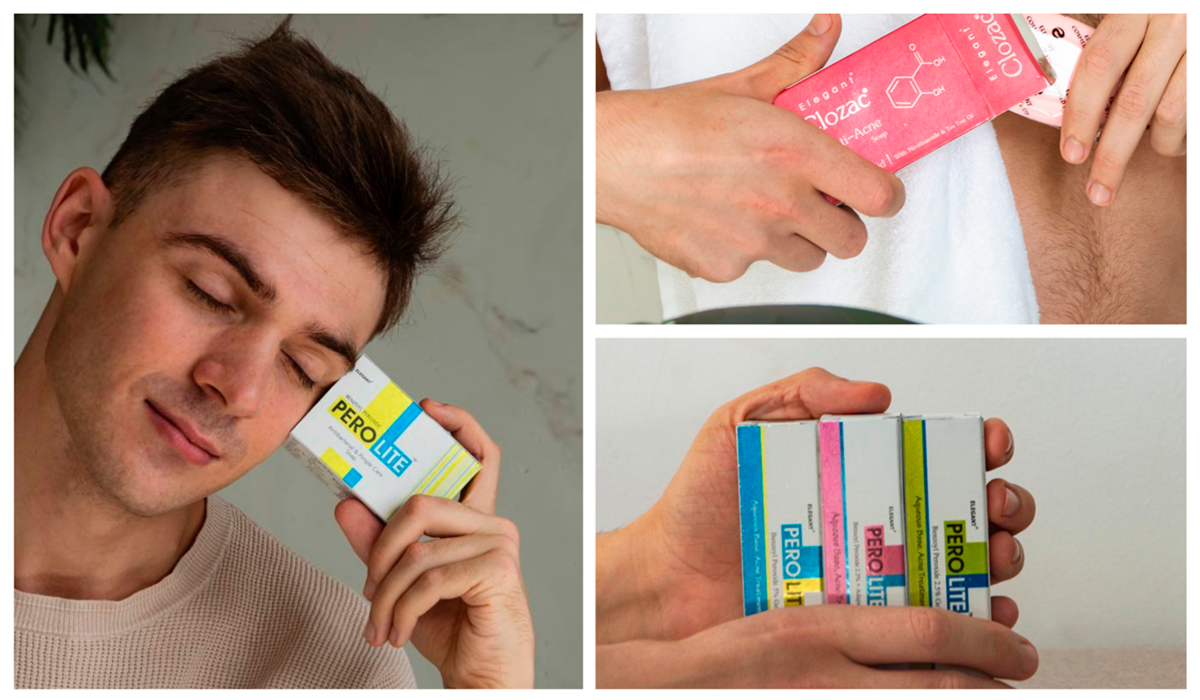
Acne is considered normal in teenage males, but it can also appear in your 20s and even after 30. In this post, we will look at the main causes of acne in men. We will also identify the symptoms of hormonal acne and how male acne differs from female acne.
Causes of acne in men
In men, as in women, one of the main reasons for the appearance of single rashes or acne is fluctuating hormone levels. Testosterone, the male androgen hormone, has many receptors in the sebaceous glands. The body of both women and men is able to produce androgen hormones, but men secrete much more oil because they produce more testosterone. Fluctuating testosterone levels increase the production of sebum, and when this secretion combines with a clogged follicle, it leads to an overgrowth of bacteria, which causes inflammation and the appearance of acne.
Men, unlike women, do not experience a monthly hormonal cycle, but they are exposed to certain factors that can alter the testosterone levels in their bodies, leading to the appearance of new or increased breakouts. Possible factors that affect testosterone levels and hormonal fluctuations include stress, exercise, sexual intercourse, age, and more.
Facial hair in men can also cause acne, as it can harbor bacteria. In addition, facial acne can be caused by ingrown hairs, or folliculitis.
To avoid these problems, it's important to use a clean razor and moisturize your skin before and after shaving. In addition, sensitive skin requires special care and shaving techniques. This is because this type of skin is prone to razor rash.
Another reason for acne in men is genetics. Children in most cases inherit problem skin. Our genetic structure is very “smart”, it is able to determine the type, density and sensitivity of our receptors to the hormones of our body. Even if your testosterone level is completely normal, but your body is more genetically susceptible to this hormone, the likelihood of skin rashes will increase accordingly.
Both men and women can suffer from acne from puberty through adulthood. However, in men, this period lasts longer. The so-called acne phase in men can last almost the entire life.
In addition, severe forms of inflammatory acne most often occur in men due to high testosterone levels. In the future, the course of 3 or 4 forms of acne can cause acne scars, which require immediate examination by a specialist and treatment. After all, the appearance of deep scars and uneven skin, which cause discomfort and shame, can often lead to depression and mental illness.
Hormonal acne
Hormonal acne is characterized by “bumps” that can be red and tender, or large red/white and filled with pus. They are most often located on the lower face, including the cheeks, jawline, chin, and neck. Hormonal acne often covers the body as well, as men have a higher density of sebaceous glands per hair follicle on their chest, shoulders, and back.
How to treat acne in men?
The first thing you should pay attention to is careful hygiene. Wash your face every morning and evening to cleanse your skin of dirt and bacteria. Use cleansers with antibacterial effects. Perolite soap, which contains benzoyl peroxide, is ideal for this. This ingredient provides gentle cleansing and removes daily dirt and excess sebum. The soap can also be used to cleanse the back, shoulders and chest.
As soon as you notice a single rash on your face or skin, apply a gel containing benzoyl peroxide. Choose Perolite gel with 2.5% or 5% benzoyl peroxide. These gels are specially designed to eliminate inflammation and prevent the development of new spots from acne and blackheads. The gel acts on the focus of inflammation and prevents bacteria from multiplying.
Don't neglect skin barrier moisturizers, as acne treatment is impossible without a moisturizer. A light moisturizer will retain skin moisture, improve protective functions, and speed up regenerative processes.
If acne is severe or scarring has occurred, do not delay treatment, do not let acne ruin your life. Consult a specialist as soon as possible to adjust your treatment regimen.










